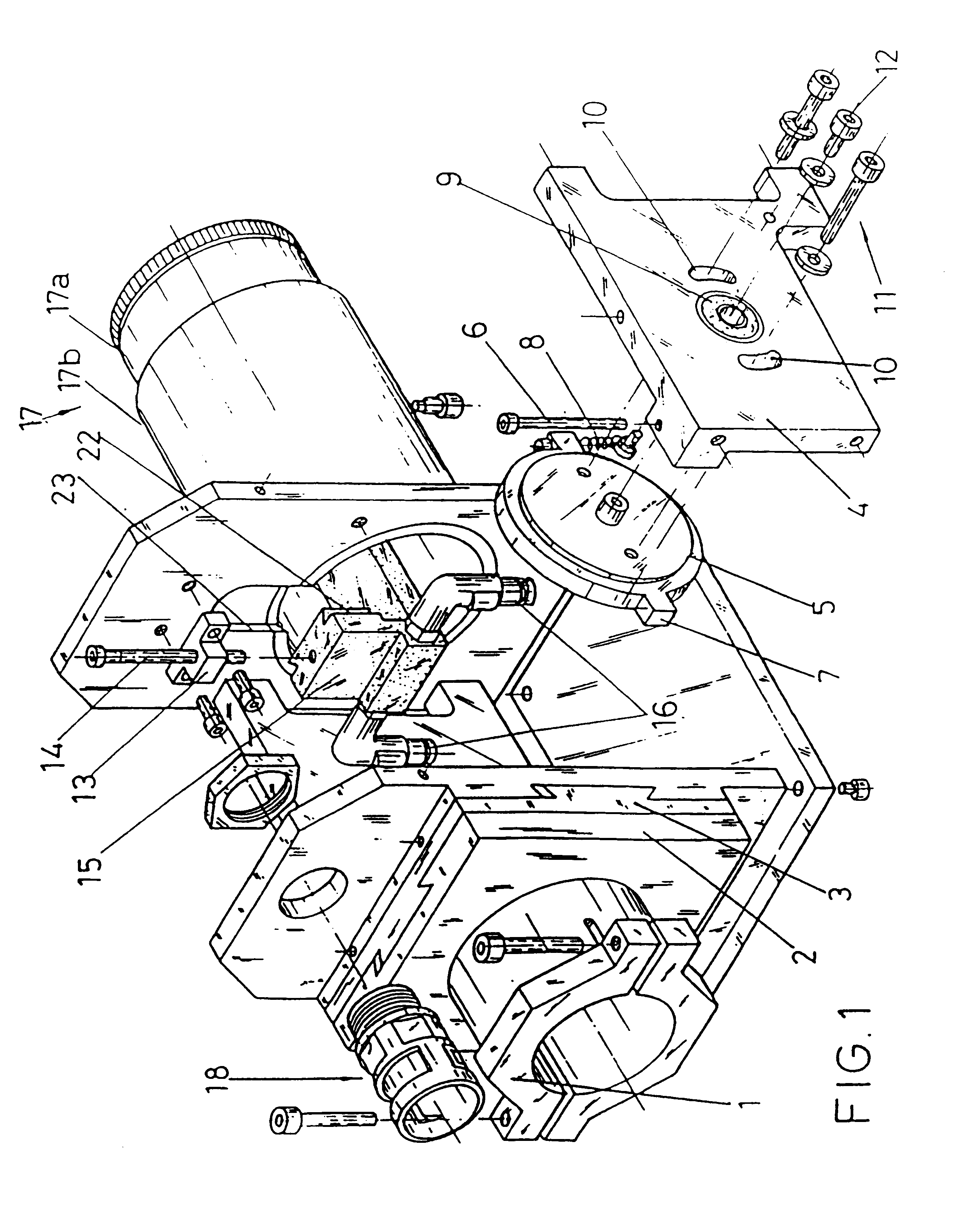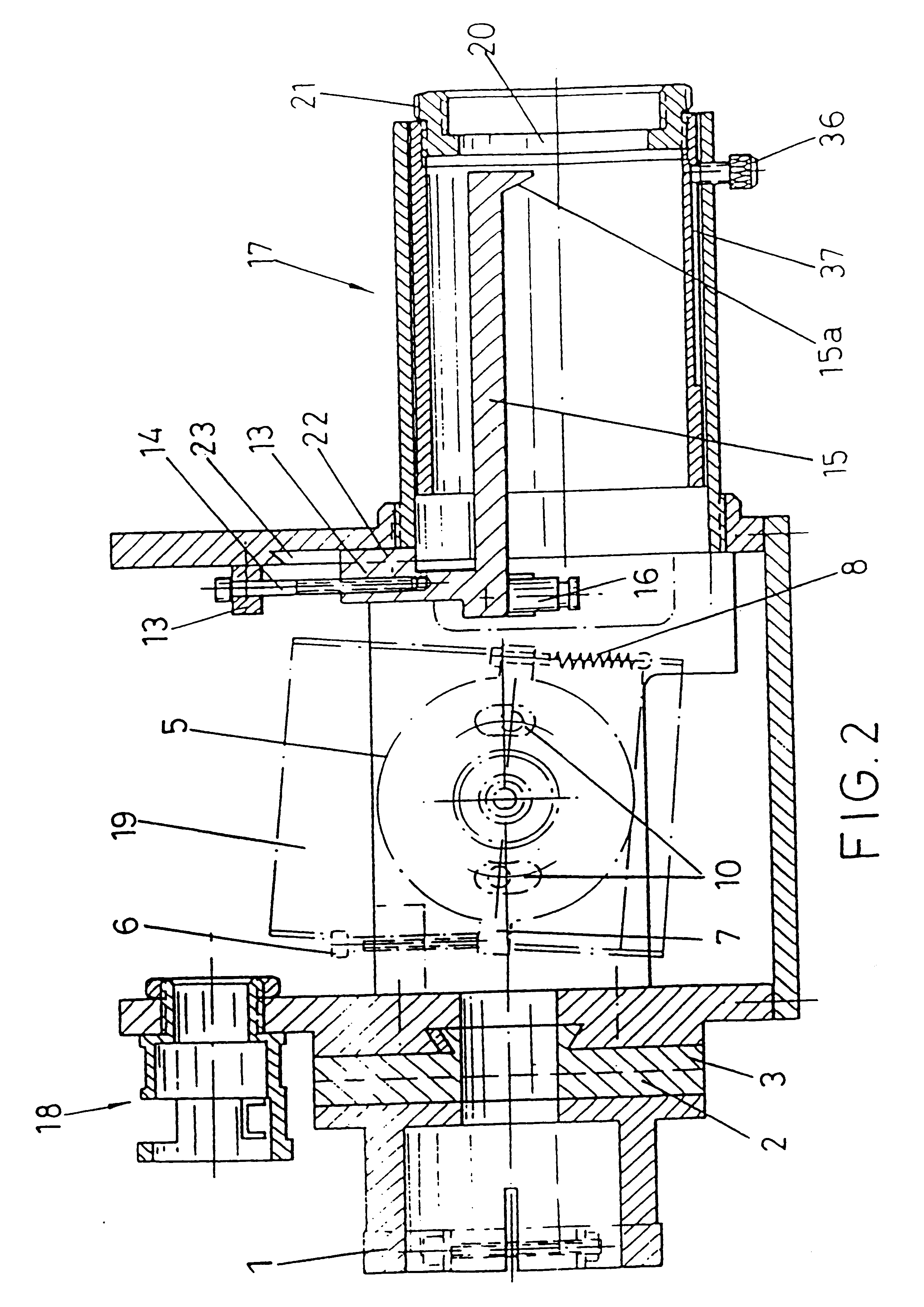Laser system for marking or perforating
a laser system and laser technology, applied in the field of laser system for marking or perforating, can solve the problems of difficult operation, low accuracy of conventional headstocks, and difficult adjustment of focal distance, and achieve the best safety and accuracy of optical systems and deflection, and easy adjustment of focal distance.
- Summary
- Abstract
- Description
- Claims
- Application Information
AI Technical Summary
Benefits of technology
Problems solved by technology
Method used
Image
Examples
Embodiment Construction
There is below a description of the invention based on above mentioned figures.
First, and with the assistance of FIGS. 1 and 2, a first example of embodiment of the invention is disclosed, in which the headstock is attached to the laser tube with possibility of moving along X and Y axes, for which the headstock includes two strips 2 and 3 which are provided with "fly wing-like" mechanizations, so that the strip 2 can be moved in vertical sense (Y axis) and the strip 3 in horizontal sense (X axis). The laser tube is attached by means of a clamp 1 with which by moving the strips 2 and 3 it is allowed to focus the laser beam in the opening of a deflector 19 inlet (FIG. 2).
The deflector 19 remains located within the headstock and is directly fitted on a tilting wheel 5 the central axis of which is located in a socket 9 provided in one of the headstock side walls.
Sideways to the socket 9 on the side wall two associated holes 10 have been provided located diametrically opposite in corresp...
PUM
| Property | Measurement | Unit |
|---|---|---|
| Length | aaaaa | aaaaa |
| Angle | aaaaa | aaaaa |
| Diameter | aaaaa | aaaaa |
Abstract
Description
Claims
Application Information
 Login to View More
Login to View More - R&D Engineer
- R&D Manager
- IP Professional
- Industry Leading Data Capabilities
- Powerful AI technology
- Patent DNA Extraction
Browse by: Latest US Patents, China's latest patents, Technical Efficacy Thesaurus, Application Domain, Technology Topic, Popular Technical Reports.
© 2024 PatSnap. All rights reserved.Legal|Privacy policy|Modern Slavery Act Transparency Statement|Sitemap|About US| Contact US: help@patsnap.com










